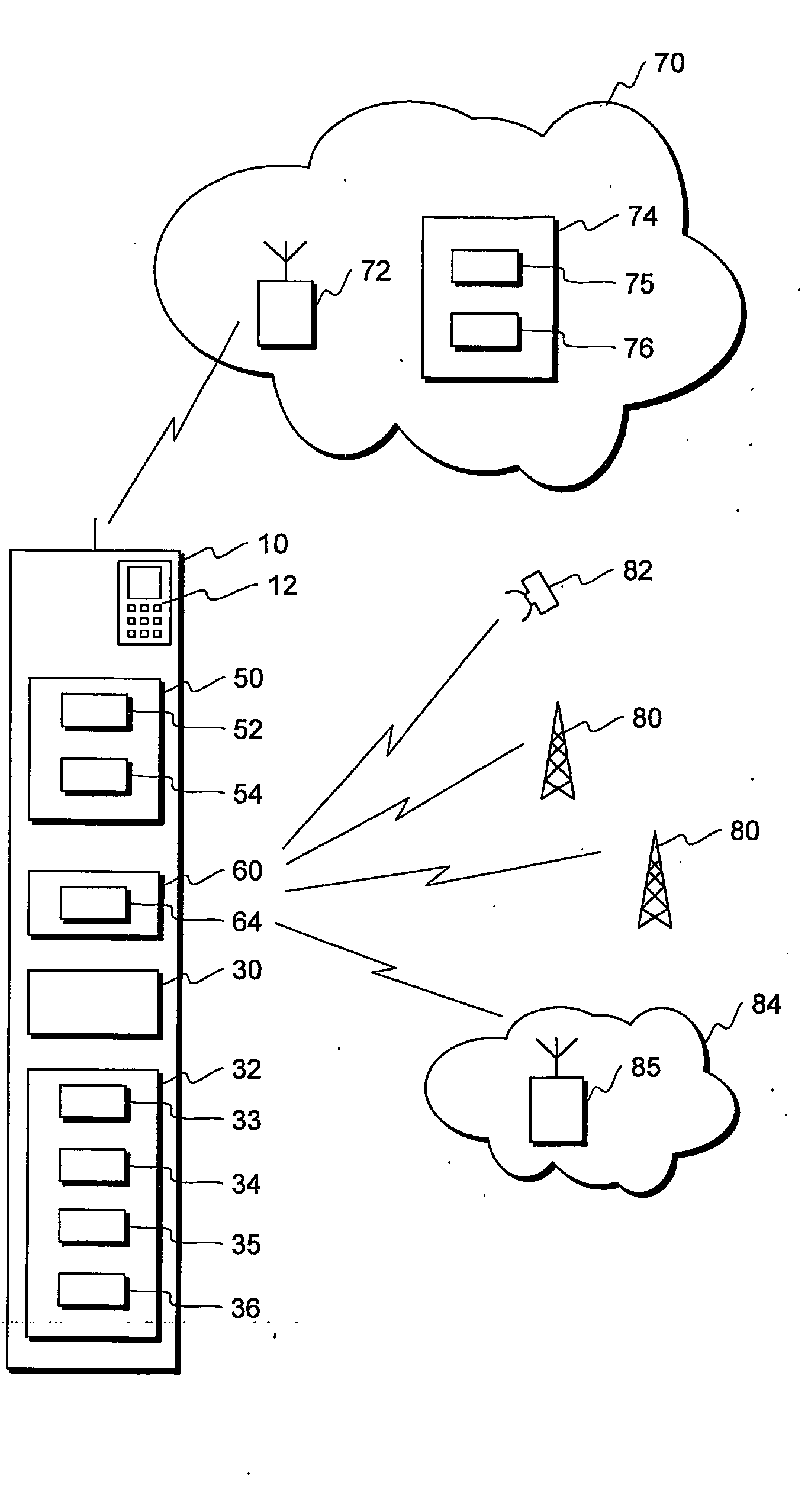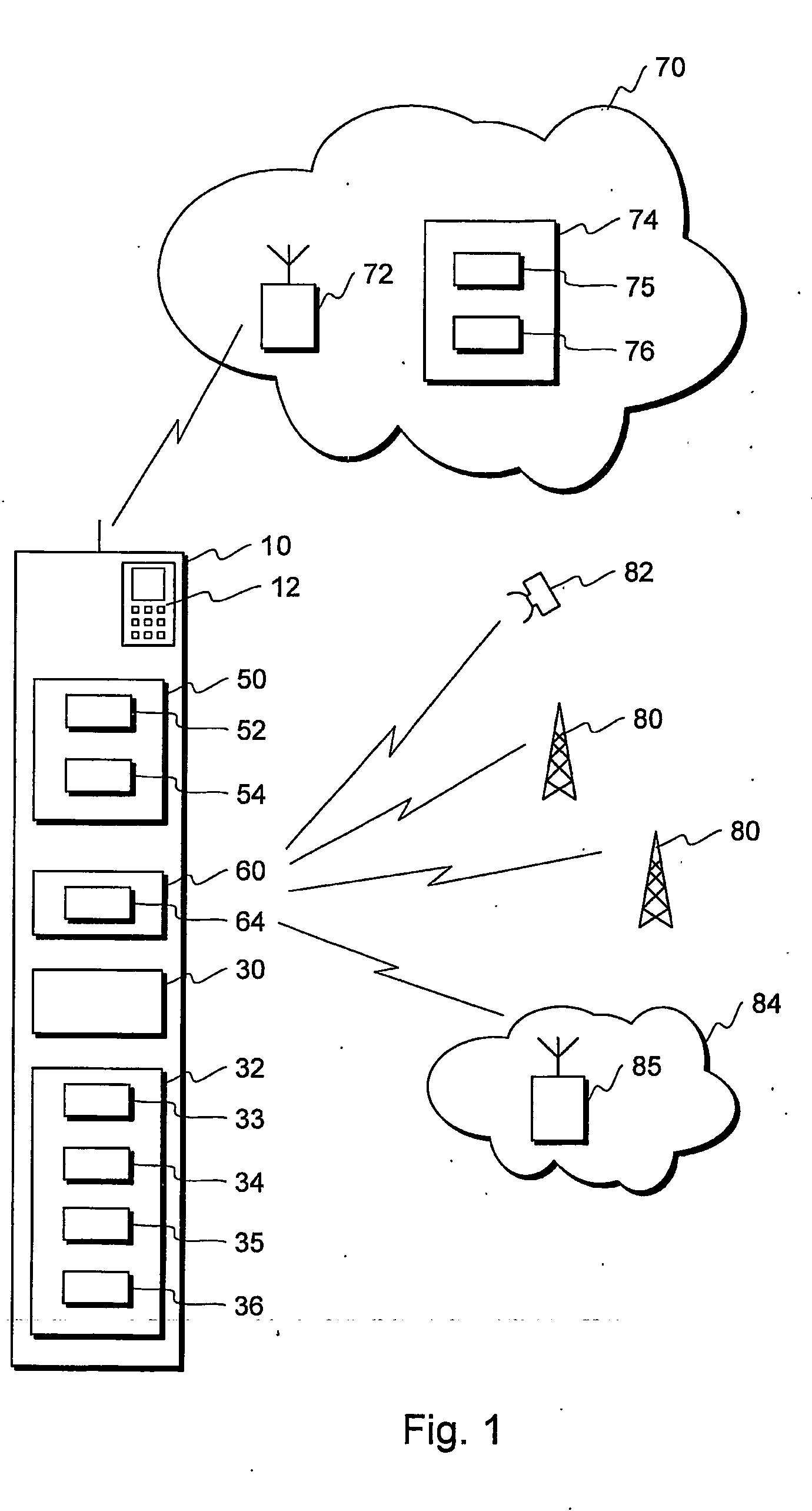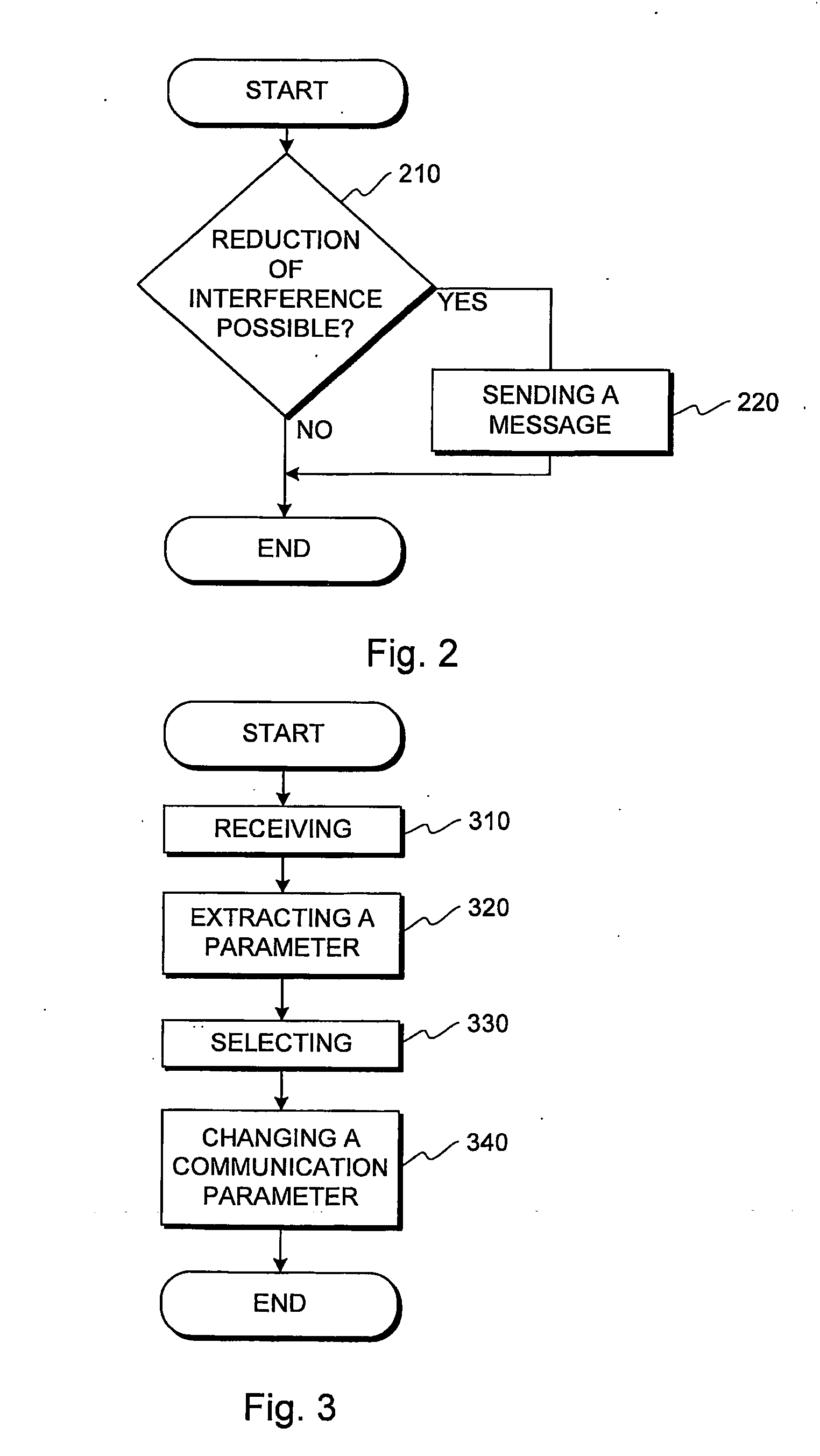Method for reducing interference
- Summary
- Abstract
- Description
- Claims
- Application Information
AI Technical Summary
Benefits of technology
Problems solved by technology
Method used
Image
Examples
Embodiment Construction
[0062]FIG. 1 illustrates a mobile station 10 comprising a first wireless part 50 with a first transmitter 52 and a first receiver 54, and a second wireless part 60 with at least a second receiver 64. The mobile station has also an user interface 12 comprising for example a display and a keyboard. The mobile station also comprises at least one processor 30 for controlling the operations of the mobile station and performing many of the functions of the mobile station. A mobile station typically comprises many other components as well, but for clarity, other components are not illustrated in FIG. 1.
[0063]FIG. 1 also illustrates a wireless communication network 70 having a base station 72, with which the mobile station 10 communicates. The wireless communication network can be for example a cellular communication network such as a GSM, UMTS, or a CDMA network, or a WLAN network.
[0064]FIG. 1 also illustrates several other types of wireless services that the second wireless part 60 of the...
PUM
 Login to View More
Login to View More Abstract
Description
Claims
Application Information
 Login to View More
Login to View More - R&D
- Intellectual Property
- Life Sciences
- Materials
- Tech Scout
- Unparalleled Data Quality
- Higher Quality Content
- 60% Fewer Hallucinations
Browse by: Latest US Patents, China's latest patents, Technical Efficacy Thesaurus, Application Domain, Technology Topic, Popular Technical Reports.
© 2025 PatSnap. All rights reserved.Legal|Privacy policy|Modern Slavery Act Transparency Statement|Sitemap|About US| Contact US: help@patsnap.com



